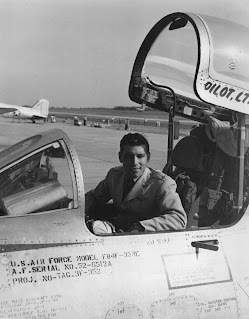Update: Family Tree Analyzer is now available for Mac.
The mission of this blog is to encourage genealogists to improve their family trees. To fortify your family tree means to:
- Use the best sources for your facts.
- Locate as many pieces of documentation as possible.
- Analyze your tree for errors and fix them.
- Add thorough, consistent, provable facts throughout your tree.
 |
| This quick report lets me see the oldest direct ancestors in my tree. |
The more your tree grows, the harder it can be to find its errors. Maybe you added lots of facts when you were first building your tree and didn't add any sources. Maybe you borrowed from someone else's tree and later realized they were wrong. Or maybe you accidentally transposed the numbers in a bunch of birth years.
Family tree errors can happen to a professional genealogist as well as an excited newcomer.
How can you find the errors when your tree is big and you've been working on it for years? How do you find a handful of needles in a haystack?
Reporting Software
Reporting tools can point out all kinds of family tree errors, showing you exactly where to jump in and start fixing.
I've written about the free software tool called Family Tree Analyzer (FTA) twice this year. (See Why You Should Be Using the Free "Family Tree Analyzer" and Run This Genealogy Report To Help Clean Up Your Dates to download the software and see what it's about.)
Get the latest version from the source: http://ftanalyzer.com. Go to the Software.Informer website for free GEDCOM analyzers that work on Mac or Windows.
I knew I'd barely scratched the surface of what FTA can do. Now I'm using it to identify a variety of errors I can fix in my family tree.
The first step is to run your family tree software and export a standard GEDCOM file. This is the agreed-upon standard that makes your family research transportable and sharable.
Then run FTA and import your GEDCOM. The first thing you'll see is a long summary of the types of facts found in your tree. My favorite part is this list:
- Direct Ancestors: 189
- Blood Relations: 1,451
- Married to Blood or Direct Relation: 541
- Related by Marriage: 12,452
Click the Data Errors tab. You might see a long list of errors. Some are more important than others, so click the Clear All button. Now click to select one type of error, such as Birth before father aged 13.
My tree has nearly 20,000 people, and I discovered the majority of them in old Italian vital records. Some of the documents had errors. Others had conflicting information. In tons of cases, I had no age or birth year for parents, so I chose to make them 25 years older than their oldest child.
For Maria Giuseppa Verzino, shown in this error report, I have evidence that she was born in 1799. But her father Paolo has a birth year of "About 1791".
 |
| Error report for seriously under-aged fathers. |
I try to be very consistent in my family tree. Whenever I see "About" for someone's birth year, I know that I subtracted 25 from the birth year of the person's oldest child. But maybe I found more of their children later. Maybe when I found Maria Giuseppa and her birth year of 1799, I forgot to update her parents' birth years. Maria Giuseppa probably has a sibling born in 1816. When I recorded that sibling, I subtracted 25 from 1816 and marked the parents as being born "About 1791".
This is easy for me to fix. I can go to Paolo Verzino in my tree and see if I've found any children born before Maria Giuseppa in 1799. If not, Paolo and his wife's birth years should be updated to "About 1774".
That's one less needle in the haystack of errors.
Now uncheck that error and select another one, like Marriage after death. I have one of these errors. My family tree says that Giuseppe Antonio delGrosso was married on 11 December 1859. But I have his death recorded as "Before Dec 1859". That needs to be looked at.
Work Through the Errors
You can work your way through the errors and correct them one by one.
FTA contains a lot of tabs and menus. Click them to see what may be useful to you. The Facts tab can show all of your direct-line ancestors in a list. Choose only Direct Ancestors in the Relationship Types section. Then choose any fact, such as Birth. Click Show only the selected Facts for Individuals.
The resulting table shows me at a glance that I've identified two sets of my 9th great grandparents born in the early 1600s! I can click any column to sort by relationship, last name, date of birth, etc.
That isn't an error to fix, but it is a way to double-check my ancestor chart where I'm keeping a list of all direct-line ancestors. (See How to Visualize Your Ancestor-Finding Progress.)
So take a break from finding new ancestors, and make the time to fix the errors in your family tree. After you've fixed a bunch of them, export a new GEDCOM. Open it in Family Tree Analyzer and see how much shorter your errors lists are.
Fixing errors is every bit as important as finding that missing census file or death record.
Find out what else you can do with this free software:

















